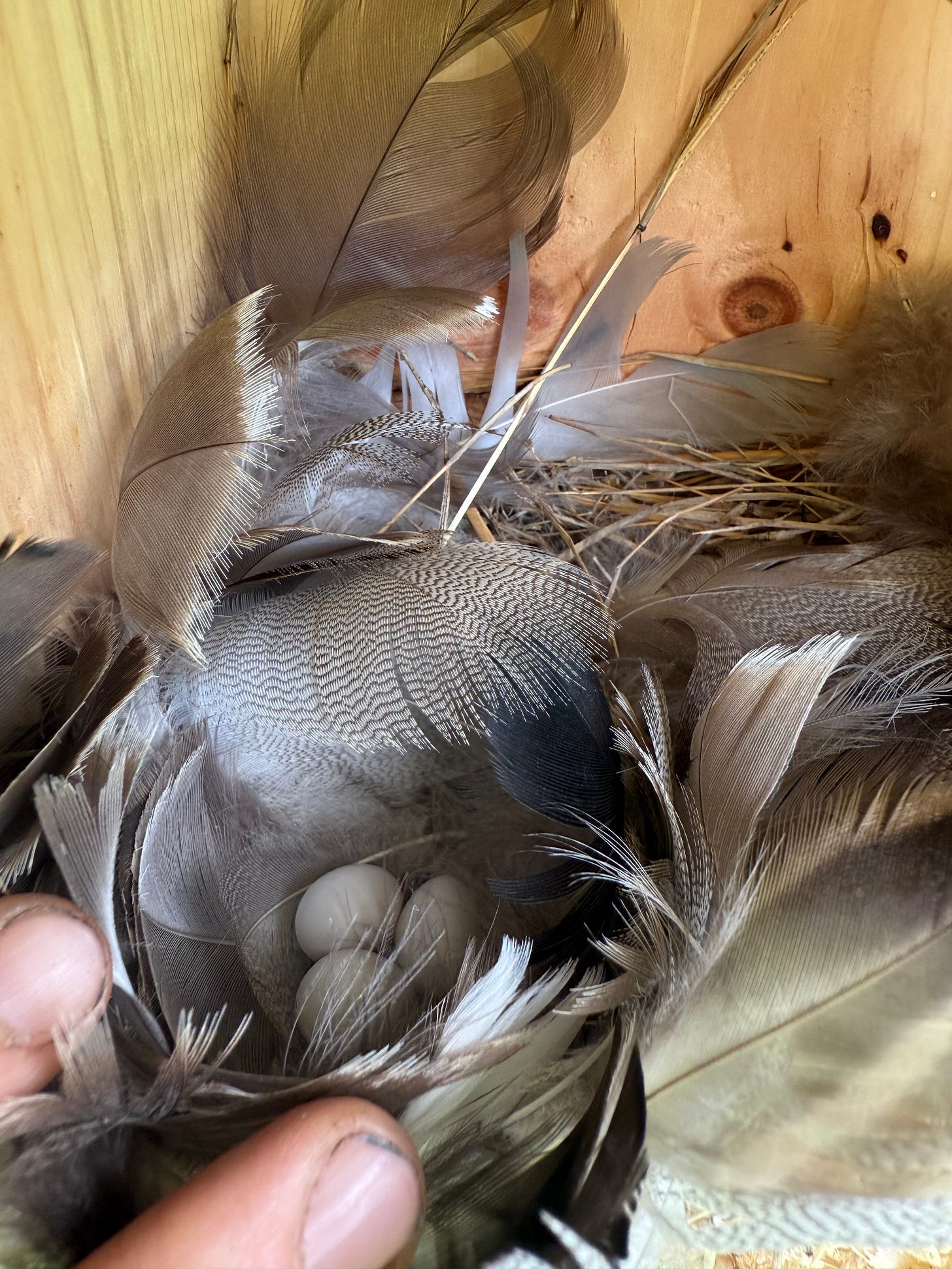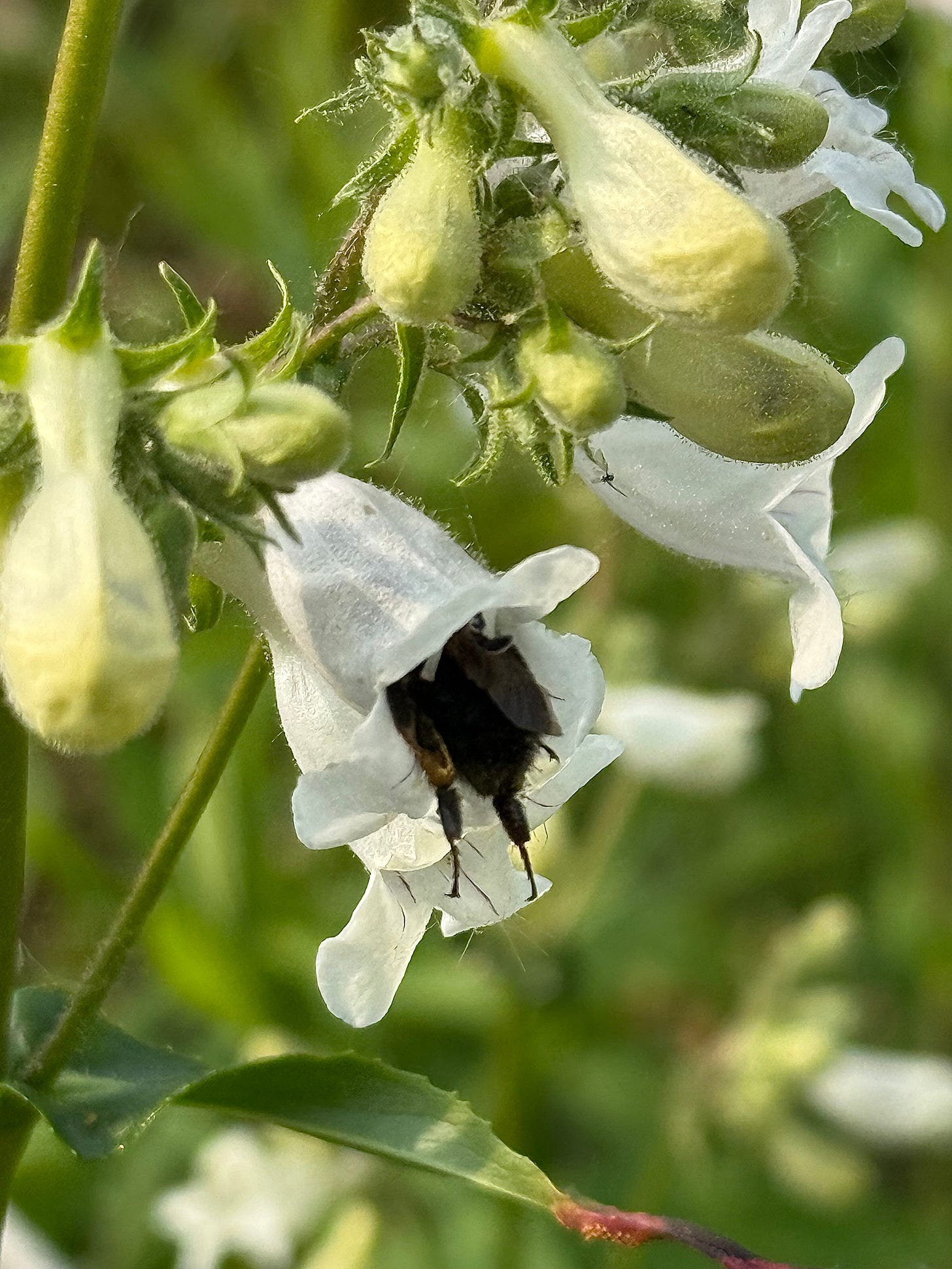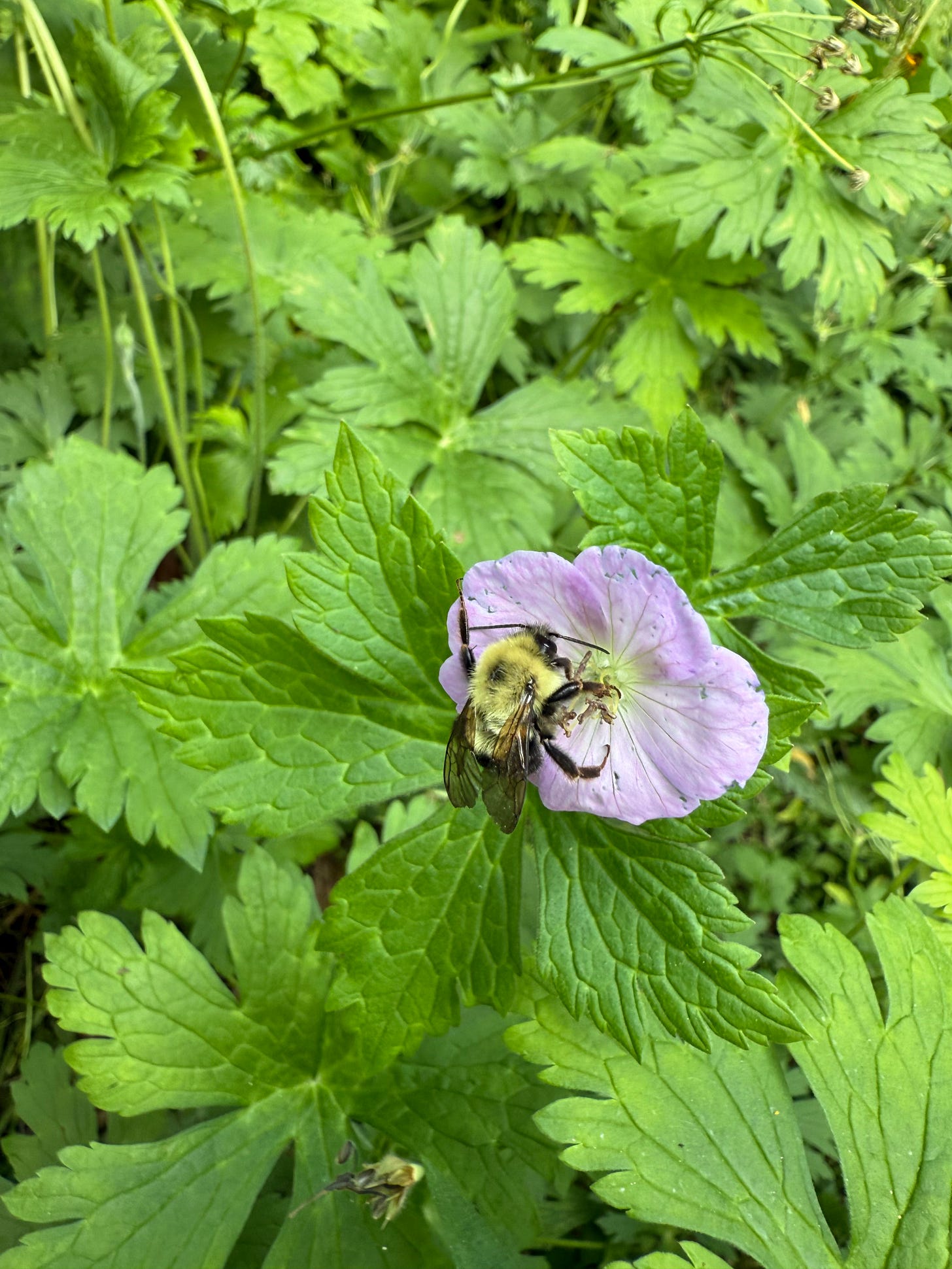The last step in my Field Naturalist training is to complete a 40-hour volunteer project that enables us to practice our newly gained skills in observation and identification. My project is to create a biodiversity survey of the Solar Pollinator Meadow at Weld Hill, in the Arnold Arboretum.
When I first entered into the project, my thought was it’s small, I can manage this. The meadow sits on 1.2 acres. I liked how contained the space is. But I quickly discovered that the space is not small. It's enormous! It’s the whole universe! I could easily spend 40 hours studying one square foot of the meadow and still not discover all the life that it supports.
I’m only a few weeks into my research, and already I have learned so much. The plants that make up the meadow are all native to Massachusetts. The seeds were hand collected in the wild, on conservation land and state parks throughout the state, and were sown under and around the solar array. Although I am focusing on the creatures that interact with the meadow, as a side benefit I am getting to know (and to be able to identify) so many native wildflowers and grasses. Like this Foxglove Beardtongue, who is the great love of many a native bumblebee.
The first bird I observed in the meadow was a Ruby-Throated Hummingbird—an auspicious beginning! Forgive the lack of hummingbird photos here. I was too busy gawking at the tiny bird as it darted from blossom to blossom, announcing out loud to the morning mist, with zero chill, HUMMINGBIRD!
A walk under the solar panels revealed that at least 5 bird species have built nests—the house finches alone built 31! —with several more birds nesting among the plants.

We even got to see an Eastern Red-Backed Salamander, hanging out under a piece of wood—an unexpected find in June!
So far I’ve spotted bumblebees, honeybees, sweat bees, wool carder bees and an assortment of flies, wasps, hornets, beetles and spittlebugs, and I know that’s just the tip of the insect iceberg.
I feel incredibly lucky to get to spend the coming months in this inspiring ecosystem in the middle of the city (thank you to the Arnold Arboretum for accepting this project and permitting me to do this research). I can’t wait to see what insects will arrive when new flowers begin to bloom.
Happy summer solstice! May your summer stretch out like a meadow, with one beautiful, surprising moment after the other.
Your friend,
Louise
If you would like to follow along with the project, here is the link to the iNaturalist page.
What are your favorite native wildflowers in the place where you are planted? I’d love to see pictures and hear stories in the comments!













"Furrow Bee on Fleabane is the new thing I say when i’m exasperated." Ha! :-)
Wild Queen Anne's lace and daisies grow on the trails behind my house—also, black-eyed Susans.